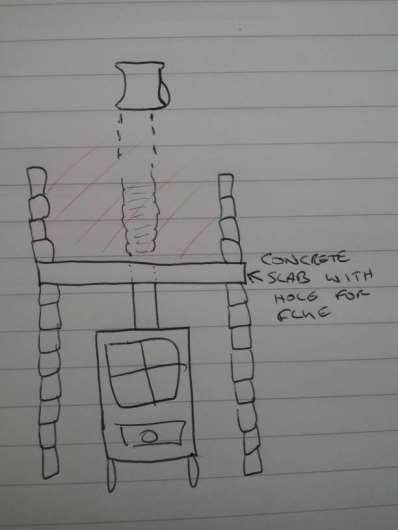- Joined
- 8 Jul 2011
- Messages
- 56
- Reaction score
- 0
- Country

Hi all,
I hope this is the correct forum for this question.
I moved into a house a couple of years ago that had a wood burner in the living room. A new header was installed in the breast with just a hole in the middle for the flue, and then the piping/lining all the way up to the top (at least, that's what the previous owner told us, and that "...it would never need swept.").
Anyway, we recently removed the stove as it was dangerous, and we have got a case iron open fireplace as a replacement. However, when we lit it, there was a pretty poor draw, and some smoke coming back into the room.
What I want to know is, could this be because of the stove header/lining having an insufficient hole for this type of fire? If so, is there anything short of replacing the header and removing the lining, or installing a chimney fan, that we could do that would help the draw? Also, the chimney isn't capped (which is something I will be doing to all of them in time), and we may have a birds nest, but I just want to ascertain that the header isn't a problem before tackling this as the sole problem.
Thanks!
I hope this is the correct forum for this question.
I moved into a house a couple of years ago that had a wood burner in the living room. A new header was installed in the breast with just a hole in the middle for the flue, and then the piping/lining all the way up to the top (at least, that's what the previous owner told us, and that "...it would never need swept.").
Anyway, we recently removed the stove as it was dangerous, and we have got a case iron open fireplace as a replacement. However, when we lit it, there was a pretty poor draw, and some smoke coming back into the room.
What I want to know is, could this be because of the stove header/lining having an insufficient hole for this type of fire? If so, is there anything short of replacing the header and removing the lining, or installing a chimney fan, that we could do that would help the draw? Also, the chimney isn't capped (which is something I will be doing to all of them in time), and we may have a birds nest, but I just want to ascertain that the header isn't a problem before tackling this as the sole problem.
Thanks!

